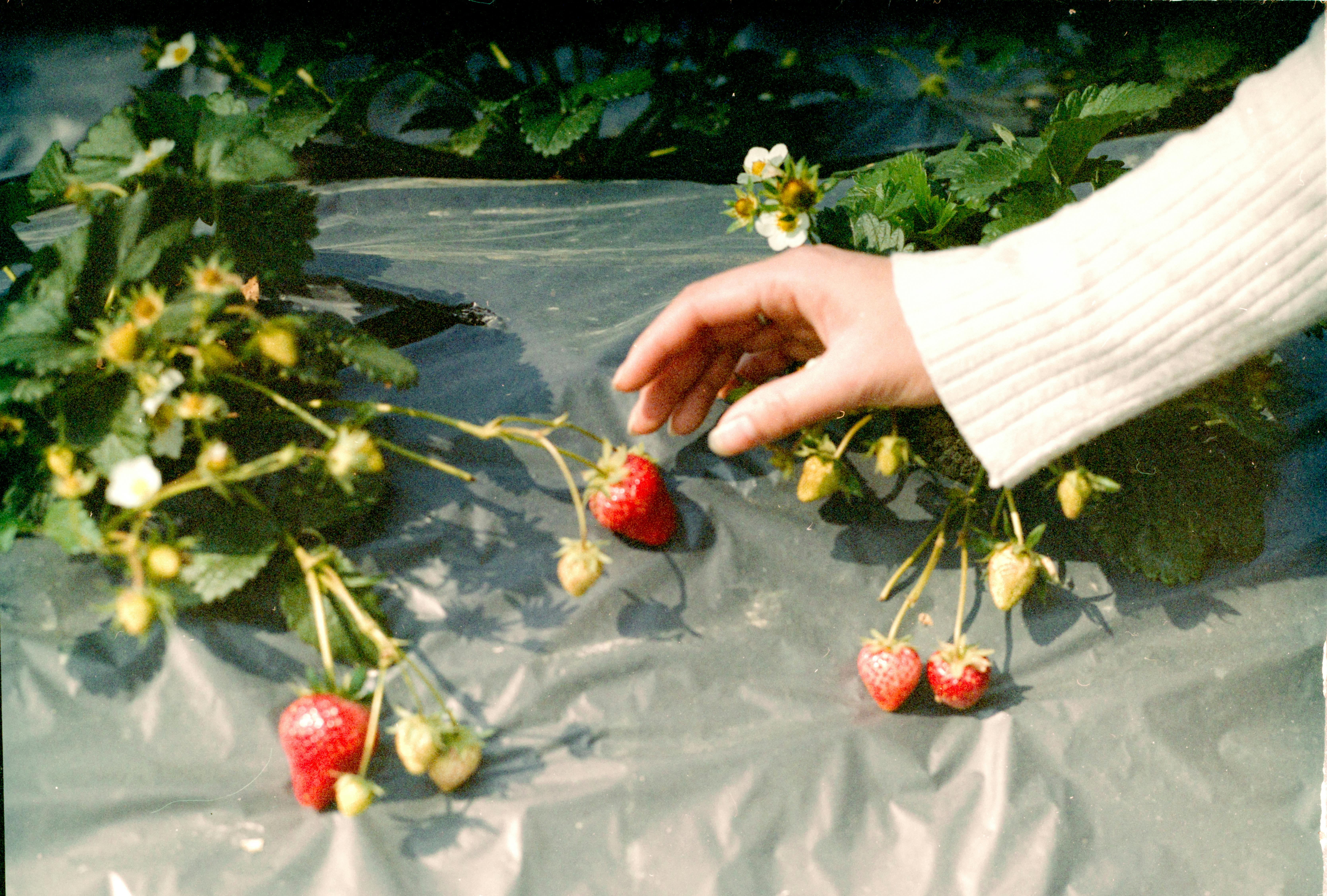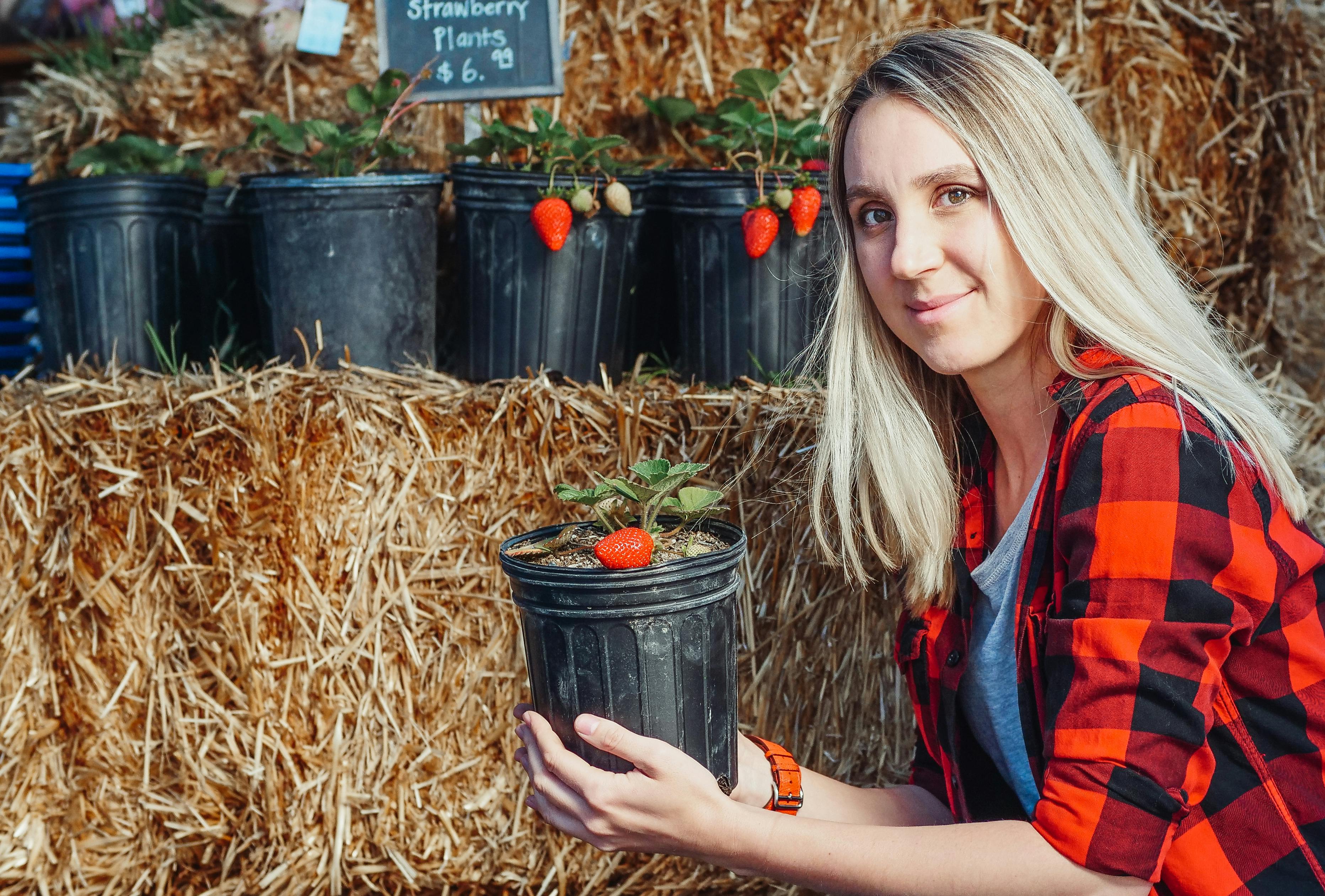Strawberries are a delicious and nutritious addition to any garden. But when is it too late to plant strawberries? This article will provide an overview of the best time to plant strawberries and what you can do if it is too late. We will also discuss some tips on how to get the most out of your strawberry crop, regardless of when they are planted. Read on for more information on when is it too late to plant strawberries!The best time to plant strawberries is in the late winter or early spring, when the soil temperature is between 45°F and 70°F. Planting around the beginning of March is ideal for most areas.
How Late Can You Plant Strawberries?
Planting strawberries doesn’t have to be an early spring activity. Strawberries can be planted as late as late summer or early fall. The important thing to keep in mind when planting strawberries late is that the plants will not reach their peak production until the second year. So, while you may get some berries in the first season, you won’t get a full harvest until later.
When planting strawberries late, it’s important to choose a variety that does well in cooler climates. These varieties will be able to survive the harsh winter temperatures and still produce a good crop of berries the following year. You’ll also want to make sure you plant in an area with plenty of sunlight and well-draining soil. This will help ensure that your plants stay healthy and vigorous throughout the season.
It’s also important to make sure you are applying adequate amounts of fertilizer and water when planting late in the season. This can help give your plants a boost and help them establish quickly so they can produce a good crop of berries the following year. Finally, it’s important to mulch your strawberry beds after planting. This helps keep weeds down and helps retain moisture during those hot summer months.
Overall, it is possible to plant strawberries late in the season if you choose a variety that does well in cooler climates and take proper care of your plants. With adequate sunlight, water, fertilizer, and mulch, you should have no problem getting a good crop of strawberries for years to come!
What Is the Optimal Temperature for Planting Strawberries?
Planting strawberries is a rewarding experience, but it can be a challenge if you don’t know the optimal temperature for this type of activity. Strawberries should be planted when the soil temperatures reach between 45 and 75 degrees Fahrenheit. This is important because the soil needs to be warm enough to stimulate growth and cool enough to prevent the roots from overheating. If you plant your strawberries when the temperature is too high or too low, you may not get the desired results.
It’s also important to note that planting strawberries in cooler climates can be more difficult than in warmer climates. In colder climates, you may need to wait until late spring or even summer before planting your strawberries. This is because the soil needs to be warm enough for the plants to thrive. If you plant them too early, they may not survive due to cold temperatures or frost damage.
When planting strawberries in warmer climates, it’s best to wait until temperatures are consistently in the 45-75 degree range before planting them outside. If you plant them too early, they could suffer heat stress or sunburn due to high temperatures. It’s also important that you water your strawberry plants regularly and keep them well-mulched so that their roots stay cool on hot days.
Overall, it’s important that you choose a time when soil temperatures are between 45 and 75 degrees Fahrenheit in order to get optimal results from your strawberry plants. You should also consider factors like climate and soil moisture levels when deciding when to plant your strawberries for best results.
Benefits of Planting Strawberries Late in the Season
Planting strawberries late in the season can have several benefits. Late planting gives the strawberry plants time to establish themselves before the winter season arrives, and helps them produce a higher yield of fruit. This can be especially helpful for areas that experience cold winters, as the strawberries will already have an established root system that can survive the cold temperatures. Additionally, late-planted strawberries can mature faster during spring and summer months, resulting in an earlier harvest. The plants may also be less likely to suffer from pests and diseases, as they will have had more time to become established. In addition, late planting gives gardeners more flexibility when it comes to varieties of strawberry plants, as some types are better suited for late planting than others.
Overall, planting strawberries late in the season can be a great way to maximize yields and ensure a healthy crop of fruit. Not only does it give the plants time to establish themselves before winter arrives, but it also increases their chances of surviving cold temperatures and provides gardeners with more options when it comes to selecting varieties of strawberry plants. With proper care and attention, late-planted strawberries can provide gardeners with a plentiful harvest come spring and summer months.
Factors Determine When It Is Too Late to Plant Strawberries
The optimal time for planting strawberries is typically late winter or early spring, depending on the climate. However, there are several factors that should be taken into account when determining when it is too late to plant strawberries. These include the type of climate, soil temperature, and frost dates.
Climate is an important factor when deciding when to plant strawberries. In warm climates, planting can occur as late as April or May but in cooler climates planting needs to occur earlier in the year. The type of strawberry variety being planted also affects the ideal planting time as some varieties are more tolerant of different temperatures than others.
Soil temperature is another important factor in determining when it is too late to plant strawberries. Soil temperatures should be at least 45 degrees Fahrenheit before planting strawberries and it takes a few weeks for soil to reach this temperature in cooler climates. The soil should also remain at this temperature for a few weeks after planting in order for the plants to properly establish themselves.
Finally, frost dates are also a factor that needs to be considered when deciding when it is too late to plant strawberries. In areas with mild winters, strawberry plants can be planted up until a few days before the last frost date and still survive and thrive. In areas with colder winters, however, strawberry plants need to be planted several weeks before the last frost date in order for them to establish themselves properly and survive the winter cold temperatures.
In summary, there are several factors that determine when it is too late to plant strawberries including climate, soil temperature, and frost dates. By taking these into consideration and planning accordingly, gardeners can ensure that their strawberry plants will have enough time to thrive before winter sets in.

Is It Too Late To Plant Strawberries After a Certain Date?
It is never too late to plant strawberries, but the best time to do it depends on the climate in your area. The optimal time to plant strawberries is usually in late winter or early spring, when temperatures are still cool and there is plenty of rain. In areas with mild winters, you may be able to get away with planting strawberries in late winter or early spring. However, if you live in an area with cold winters, you should wait until temperatures start warming up before planting your strawberries.
Additionally, it is important to consider the type of strawberry plants you are planting. June-bearing varieties should be planted in fall or early spring, while ever-bearing and day-neutral varieties can be planted any time of year as long as the soil isn’t frozen. If you are planting bare-root plants, they should be planted as soon as possible after purchase.
If you miss the ideal window for planting strawberries in your area, don’t worry! You can still have success if you take proper care of your plants. Give them plenty of sun and water and make sure that the soil has good drainage so that their roots don’t rot. With some extra effort and care, you can still have a successful strawberry harvest even if you missed the optimal planting window.
In conclusion, while it may not be ideal to plant strawberries after a certain date depending on the climate in your area, it is not impossible either! With careful attention and proper care for your plants, you can still enjoy a successful strawberry harvest even if you didn’t get them into the ground during the recommended time frame.
It’s Never Too Late To Plant Strawberries
Strawberry plants are some of the hardiest and most versatile fruits out there. They can be planted in early spring or late fall, depending on the climate. The best time to plant strawberries is usually when the weather has cooled down and the soil begins to warm up again. Even though it may seem like fall is coming to an end, it’s never too late to plant strawberries.
Fall is a great time to plant strawberries because the cooler temperatures help the plants develop strong root systems. This allows them to better withstand winter cold and spring frosts. Plus, planting in the fall gives roots time to develop before winter sets in, which increases their chances of survival come springtime.
When planting strawberries in the fall, choose varieties that are suitable for your climate and growing conditions. In colder regions, look for varieties that can withstand frost and heavy snowfall. In warmer areas, opt for varieties that tolerate high heat and are disease-resistant.
It’s also important to make sure your soil is well-draining and rich in organic matter before planting your strawberry plants. Adding compost or other organic matter will help ensure good drainage and nutrient-rich soil for your plants. Be sure to give your plants plenty of room so they can spread out their roots without overcrowding each other.
No matter what variety you choose or where you live, it’s never too late to plant strawberries during the fall season! Just make sure you choose a variety suitable for your climate, prepare the soil properly, and give your plants plenty of space so they can reach their full growth potential. With a little extra care and attention, you could have a bountiful harvest come springtime!
Late Season Strawberry Plants
Late in the season, many gardeners are looking for the best way to get a bumper crop of sweet strawberries. Fortunately, there are several varieties of strawberry plants that can be planted late in the season and produce a delicious harvest. The most common types of late season strawberry plants include everbearing, day-neutral, and alpine varieties.
Everbearing Strawberries
Everbearing strawberries are typically planted in early summer and produce two harvests throughout the year. This type of plant is ideal for late-season planting because it will still flower and produce fruit even after cooler temperatures have arrived. Everbearing strawberries tend to be smaller than other varieties, but they are very productive and can provide a large harvest.
Day-Neutral Strawberries
Day-neutral strawberries are another great option for late season planting. These plants will flower throughout the entire growing season regardless of day length or temperature fluctuations. This makes them an ideal choice for gardeners who want to extend their growing season into fall or winter months. Day-neutral varieties tend to be larger than everbearing plants and produce fewer runners, so they take up less space in the garden.
Alpine Strawberries
Alpine strawberries are a unique variety that produces small but intensely flavorful fruit. These plants are native to Europe and can tolerate colder temperatures than other types of strawberry plants. Alpine strawberries generally need more time to mature than other varieties but they make up for it with their sweet taste and small size.
Overall, there are many varieties of strawberry plants that can be planted late in the season with great success. Everbearing, day-neutral, and alpine strawberries all offer excellent yields when planted at the right time and given the proper care. With a little bit of research, gardeners can find the perfect variety for their needs and enjoy a delicious harvest even during cooler months!

Conclusion
It is never too late to plant strawberries, but there are some considerations to keep in mind. Planting too late can reduce the amount of time the plants have to establish, resulting in a smaller harvest. Additionally, late-planted strawberries may suffer from pests and diseases more than ones planted earlier in the season.
However, with proper care and attention, it is possible to successfully plant strawberries even after the recommended time has passed. For those who missed their opportunity for an early planting, investing in varieties that thrive in cooler temperatures and providing extra protection against pests and diseases can help ensure a successful harvest.
Ultimately, when it comes to planting strawberries, timing is key. While it may be possible to plant later than recommended and still achieve success, taking advantage of early planting opportunities can give your strawberry plants the best chance of thriving into a bountiful harvest.



